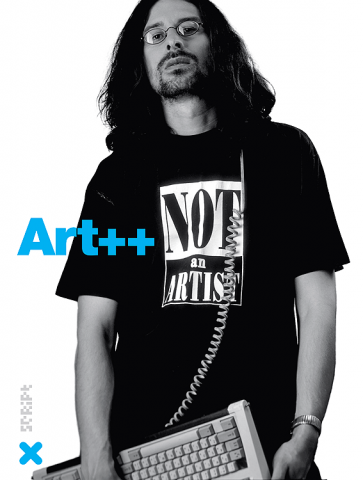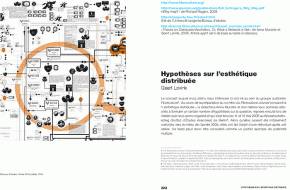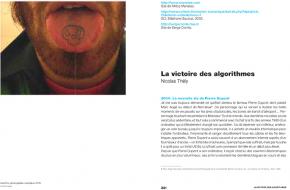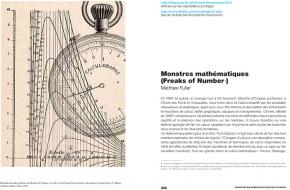
Art++
David-Olivier Lartigaud
Since the late 1990s, a “back to programming” movement in the production of digital artworks has been gaining momentum. Although the artist is no longer obliged to also be a programmer to be able to utilize computers, as was the case in the “pioneering days” of computer generated art in the 1960s and ’70s, writing one’s own code is becoming a contemporary way to assert a certain intellectual and creative independence...
Abstract
By gathering a selection of texts, original and/or hitherto unpublished in French, this book placed under the direction of David-Olivier Lartigaud, seeks to analyze and to understand this new approach to the question of computer /art through a unique look at contemporary thinking in this domain. Art ++ is the first title of Script, the collection dedicated to digital culture published by Éditions HYX.
Contributors : Inke Arns, Samuel Bianchini, Andreas Broeckmann, Christophe Bruno, Wendy Chun, Geoff Cox, Florian Cramer, Anne-Marie Duguet, Jean-Paul Fourmentraux, Darko Fritz, Matthew Fuller, Alexander Galloway, Olga Goriunova, Graham Harwood, Wilfried Hou Je Bek, Anne Laforet, David-Olivier Lartigaud, Geert Lovink, Nathalie Magnan, Alex McLean, Karen O’Rourke, Miller Puckette, Gilles Rouffineau, Antoine Schmitt, Nicolas Thély, Sylvie Tissot, Jo Walsh, Adrian Ward.
Contents
Informations
- 25,00 €
- Language(s): French
- Référence:978-2-910385-51-4
- Nombre de pages: 456
- Couleur(s): quadrichromie
- Type de reliure: broché
- Dimensions: 1 × 15 × 20.5 cm
- Poids: 820 g
- Partenaire: Publié avec le soutien de : École doctorale d'arts plastiques, esthétique et sciences de l'art de l'université Paris 1 Panthéon-Sorbonne, École nationale supérieure d’art de Nancy, Laboratoire des Arts et des Médias [LAM], Ministère de la culture et de la



